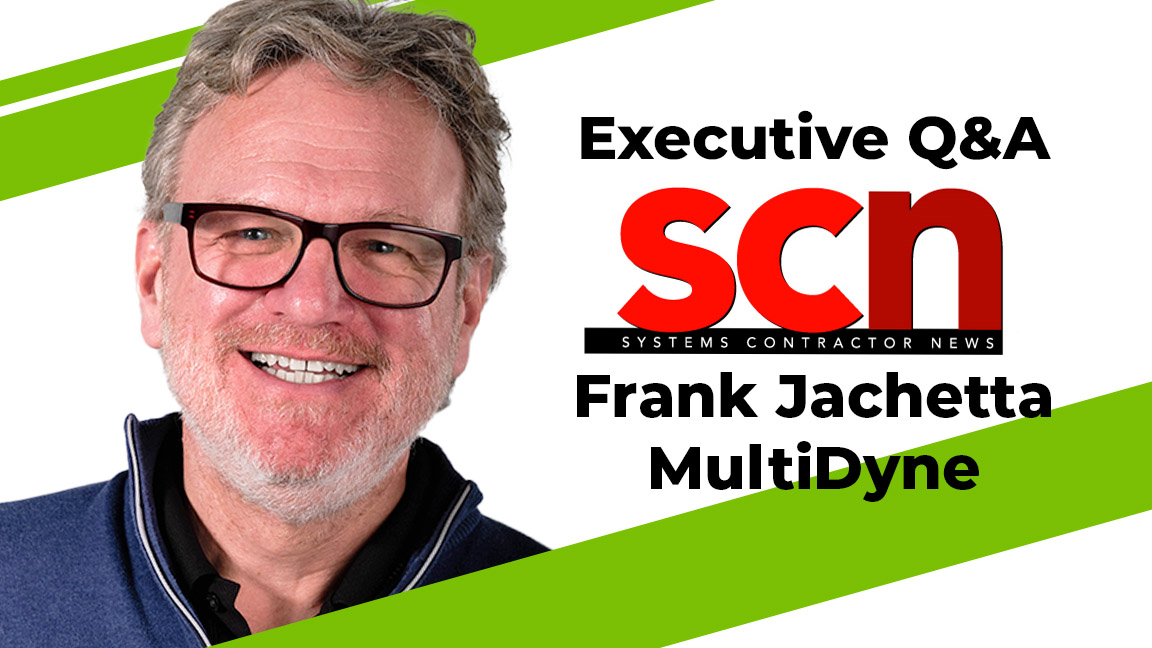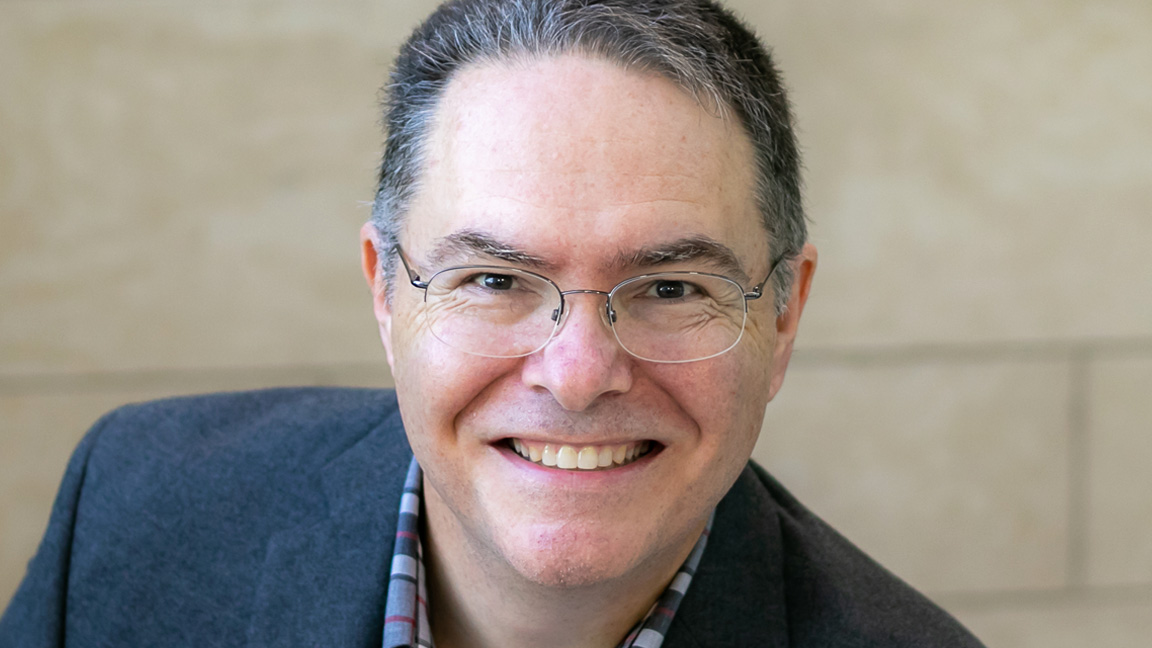SCN: How long have you been with Multidyne, and what are your responsibilities?
Frank Jachetta: I have been a part of MultiDyne since the day my father, Vincent Jachetta, founded the company in 1976. I was in junior high at the time, and I would help my father assemble products in the basement of our family home. I joined MultiDyne in a formal role after college. It was still a family business at the time—as in my father, brother, myself and one other employee who remains with the company today.
As with any CEO, my responsibilities focus on the overall management, performance, and strategic direction of the company. Having spent nearly 50 years with the company, I have been actively involved in every part of the company at some point. Naturally, that means that some functions are closer to my heart than others. Product design and engineering is at the top of that list.
[Executive Q&A: Better Business through Software]
SCN: So, MultiDyne is in the Pro AV business now … ?
FJ: There was a tendency for some of the biggest broadcast brands to look down at the AV industry. Today, some of these same brands are relying on AV to drive sales. AV has become a very mature and active market with strong opportunities.
MultiDyne has been in the broadcast business since its inception. We evolved over time to become a leading brand and innovator for fiber optic transport. Our fiber products have always fit comfortably in the "space between”—specifically, the production trucks and in-house technicians that use our throwdown products and remote powering devices for sports and venue production. We have long-term customers that use these same products as interconnects on large corporate and university campuses. The reality is that our technologies have always served AV applications.
SCN: Would it be fair to say your new focus supports the idea that Pro AV and broadcast technologies are converging?
FJ: Most definitely. As more video and audio systems transition to IP networks, AV is increasingly conjoined with broadcast workflows. They are no longer truly disparate markets. Looking beyond campus interconnects, we see an increasing number of enterprise corporate customers coming to MultiDyne that are producing content at the same caliber of our broadcast customers. We are working with executives that want to see their internally produced content to look as high-quality and engaging as the broadcast content they watch at home. They want more than what a conference room camera can offer, and that’s where MultiDyne comes in.
But it’s not just the super high-end, as that is not always necessary in AV. Our VB Series is an ideal example of a product that is versatile to serve the needs of the AV community. These are configurable fiber transport solutions to serve any combination of video, audio, data, and Ethernet signals. They are suitable for permanent installed AV systems and as temporary throwdowns to reduce reliance on copper connections.
SCN: Even if you don’t necessarily need a longer cable run, how can Pro AV installations benefit from your VB PTZ fiber extenders?
FJ: The VB Series, or Versatile Brix products, are just that, extremely versatile. The product can be customized to a fine detail and supports power over SMPTE hybrid fiber along with POE++ for the latest generation PTZ cameras. The system supports multiple 12G/3G signals as well as HDMI, so end users can support peripheral requirements such as talent monitors, prompters, or utility transport of other signals on set that need to get to and from the control room.
Also, the VB series is used in a huge range of applications outside of PTZs. This includes the ability to send 10x 12G-SDIs from the machine room and output 10x HDMI 2.0s at the receive side or the other way around if needed. A popular application for the VB is the ability to send nine 1 GbE and or 10 GbE copper LAN connections over one fiber, with all networks being optically isolated from each other. This makes network management a snap and can also meet network division security requirements on the same fiber.
SCN: How important is 12G-SDI transport to the Pro AV industry?
FJ: 12G-SDI has become increasingly important, as it has become more affordable and easier to deploy. The fact that it can support 4K60 with 16 channels of audio and various types of metadata make it a comprehensive standard that is easy to manage. It can be somewhat distance limited over copper due to its high 12 Gbps bit rate and that is where fiber comes in. We can easily transmit 12G over 10 km (roughly 6.2 miles) of fiber and we have systems that can achieve 40 km of distance for metro applications. For intercampus and interfacility links, we can send 18x 12G-SDIs over one single-mode fiber.
SCN: Are you seeing significant interest in 8K for live production?
FJ: Yes, interest in 8K image capture has been growing and is going to increase in prominence as storage and other production tools such as switchers, graphics systems, and encoders start to support 8K. As in the past, camera and display manufacturers are leading the way and everything in the middle needs to evolve.
The good news is if your camera uses Quad-Link 12G to achieve 8K60, MultiDyne has you covered. The next generation SilverBack fiber camera adapter is set to support eight 12G-SDIs over the SMPTE hybrid fiber connection. The SilverBack is widely deployed in the enterprise space today for HD and 4K productions, and its universal design means the end user can pick the perfect camera system for the job.
SCN: What are some of MultiDyne’s major achievements since it was founded in 1976?
FJ: Our first major achievement returns to the family basement where I helped my father assemble the product that launched the company. That was the MultiDyne TS-1, a portable test signal generator that gave broadcasters a compact and low-cost alternative to the large, expensive, rack-mounted versions common at the time. MultiDyne was awarded its first Emmy on the TS-1 in 2017—40 years after it appeared on the market. We won our second Emmy for our SilverBack fiber camera adapters in 2023. This was an important product innovation that helped content producers convert digital cinema cameras into SMPTE studio cameras for live multi-camera productions. This is an important product for the AV market as well, as our SilverBack fiber camera adapters are lightweight cameraback systems that bring value to live concerts, sports, and worship services in addition to the TV productions we support on the broadcast side of our business.
SCN: What new Pro AV initiatives are we likely to see from MultiDyne?
FJ: We introduced our first IP Gateway products for moving SDI signals onto ST 2110 IP networks at NAB last year. We also showed these at InfoComm and there are use cases for the AV market, especially for moving compressed JPEG-X signals onto these networks. ST 2110 has very strict parameters when it comes to what technologies and processes adhere to the standard, which is often too restrictive and expensive for the AV industry. Soon, we will introduce our first IPMX gateways, and our customers can expect to see more IP-based products that use fiber optic interconnects to assist in managing a hybrid 12G-SDI and IPMX/ST 2110 IP facility.
[The Evolution of IPMX for AV-over-IP]
SCN: How can systems contractors better position themselves to profit from products and/or services you have to offer?
FJ: Our most successful system integrator partners are just that, partners. They invest the time to understand our offerings—and once they understand the power of our solutions, they can easily address complicated and demanding requirements. This approach is then reutilized for the next project and so on.

